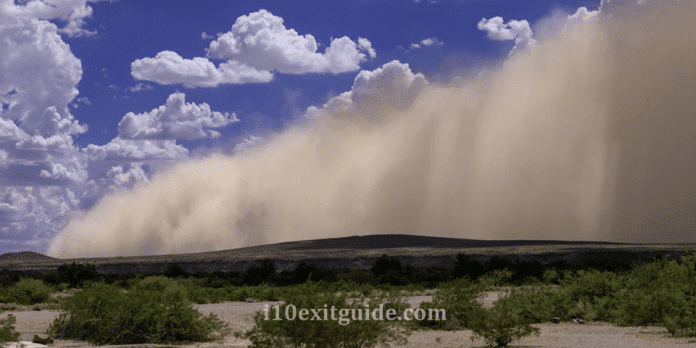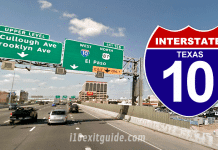Are you ready I-10 Drivers? Monsoon season is back.
While the exact moment of when the first massive wall of dust will rise up from the desert floor isn’t known, we do know this: It’s coming.
With June 9-14 officially proclaimed Monsoon Awareness Week by Arizona Governor Doug Ducey, now is the perfect time to brush up on the actions drivers can take to stay safest when confronted with blowing dust.
The No. 1 thing motorists can do to stay out of harm’s way? Do. Not. Drive. Into. A. Dust. Storm.
That’s a really bad idea. Visibility can drop to zero and turn pitch black, meaning you’re driving blind and so is anyone else on the road with you. But maybe you’re curious and wonder, “Just how dark and dangerous could it be?” Well, we’ve got the answers. This video shows how quickly visibility is reduced to nearly nothing after driving into a dust storm. And this video shows the aftermath of a 19-vehicle collision that occurred in 2013 in dust storm on Interstate 10 near Picacho Peak that resulted in three fatalities and a dozen injured people.
OK, so now you’re convinced to not make the decision to drive into the towering wall of dust. But what if a dust channel whips across the highway in front of you, engulfing your vehicle in a swirling sandstorm? Remember these words: Pull Aside, Stay Alive.
The Arizona DOT has developed the following “Pull Aside, Stay Alive” dust storm safety driving tips, which can help motorists survive a blowing dust event.
- If you encounter a dust storm, immediately check traffic around your vehicle (front, back and to the side) and begin slowing down.
- Do not wait until poor visibility makes it difficult to safely pull off the roadway – do it as soon as possible. Completely exit the highway if you can.
- Do not stop in a travel lane or in the emergency lane. Look for a safe place to pull completely off the paved portion of the roadway.
- Turn off all vehicle lights. You do not want other vehicles, approaching from behind, to use your lights as a guide and possibly crash into your parked vehicle.
- Set your emergency brake and take your foot off the brake.
- Stay in the vehicle with your seat belt buckled and wait for the storm to pass.
- Drivers of high-profile vehicles should be especially aware of changing weather conditions and travel at reduced speeds.
On the road? Why not take us with you. Our websites are mobile-friendly! Visit our growing family of exit guides: I-4 Exit Guide, I-5 Exit Guide, I-10 Exit Guide, I-75 Exit Guide, and I-95 Exit Guide. Detailed exit service listings… discount lodging, camping, food, gas and more for every exit along the way!




